There are long rivers, and there are famous rivers. The Nile(尼罗河)is the world's longest and most famous river. It runs 6,650 kilometers. Crocodiles and hippos(河马)live in its waters. Pyramids built by ancient Egyptians rise along its banks.
The main branch of the Nile, the White Nile, starts just above Lake Victoria, the world's second largest fresh﹣water lake, in east central Africa. Then it flows to the north. At Sudan's capital, another great river called the Blue Nile joins the White Nile. Together, they form one very powerful river. Then it goes through Egypt's famous Nile Valley before reaching the Mediterranean Sea.
Ancient Egypt, the first great African civilization(文明), started along the banks of the Nile more than 5,000 years ago. Ancient Egypt ruled the Nile Valley for thousands of years. Great pyramids and temples were built on the banks and we can still visit them today.
Without the rich farmland along the banks of the Nile, there might be no ancient Egypt civilization. Every year, the Nile flooded its banks. The floodwaters covered the banks with a rich soil. The Nile's banks were easy to farm and produce crops.
The Nile also made a perfect highway for boats. The river runs north, but the wind on the river blows south. To go south, boaters put up sails to catch the wind. To go north, they took the sails down. Ancient people traded along the river for hundreds of miles.
The Nile ﹣ the (1) and most famous river in the world |
|
Where does the Nile flow? |
• The White Nile is the (2) ___ branch of the Nile. It starts (3) ____ Lake Victoria and then runs to the north. • The Blue Nile joins the White Nile at the (4) __ of Sudan. They form a powerful river. • Then the Nile goes through the Nile Valley. Finally it (5) ___ the Mediterranean Sea. |
The Nile's long and rich (6) . |
• Ancient Egypt started along the banks of the Nile over 5.000 years ago. Its people (7) ___ pyramids and temples we can still visit today. • Every year the Nile flooded its banks. The floodwaters covered the banks with a rich soil. Rich farmland made this ancient civilization(8) . • The Nile made a perfect highway for boats. To go south, boaters put up sails to catch the wind. To go (9) , they took the sails down. Ancient people bought and (10) ___ goods along the river for hundreds of miles. |
Which sentence should be put at the end of the paragraph on the right? ( )
I like to see the mountains. There are some small mountains and some tall mountains. The small mountains are green and have lots of trees.________ |
A.The mountains are tall.
B.The mountains are tall and nice.
C.The nice mountains are interesting to look at.
D.The tall mountains are covered with white snow.
The Dead Sea
At 430 meters below sea level, the Dead Sea is Earth's lowest point on land. It is popular for its wonderful buoyancy(浮力). The high salt content﹣more than 34 percent ﹣ makes swimming more like floating.
Now the Dead Sea is actually dying. People are using water from the Jordan River, which takes water away from the Dead Sea. Since 1930, its surf area has reduced by almost 40 percent.
Venice, Italy
With waterways instead of streets. This "Floating City" has attracted visitors for centuries. But no visit to Venice is complete without a ride on one of its famous gondolas, human powered water taxis. Water creates Venice. But water will also kill the city.
Built on soft earth, Venice has slowly been sinking (下沉) for centuries. Now, with rising sea levels caused by human activities, it's sinking faster. According to US﹣based magazine Architectural Digest, the city may disappear in the next 100 years. Better book your gondola soon!
Great Barrier Reef, Australia
Covering more than 2,300 kilometers of Australia's northeast coast, Great Barrier Reef is the world's largest reef ecosystem, and an ideal place for scuba divers (水肺潜水者).Thousands of colorful coral (珊瑚) and fish make homes in the blue sea water. It's like a big underwater party!
Sadly, the party might be over soon. The reef is dying. Human activities are changing the weather. Warming ocean, water kills the coral, and this causes problems up the food chain. The New York Times reported that large parts are already dead, and the reef system might be gone by 2030.
(1)What can be the best title of the passage?
A. Disappearing Watery Wonders
B. Amazing Man﹣made Wonders on the Sea
C. Lost Watery Wonders on the Sea
D. Last Watery Wonders in the World
(2)Which of the following is the shared cause of the problems all the three places are facing?
A. Water loss.
B. Sea pollution.
C. Warming seas.
D. Human activities.
(3)If Tom wants to visit all the following places before they are gone, and he can only afford one in the next 15 years, where must he go?
A. The Dead Sea.
B. Venice.
C. Italy.
D. Great Barrier Reef.
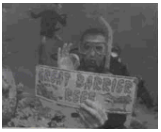
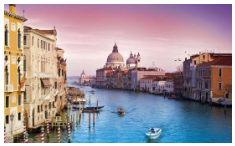

When Zheng He was born, he was named Ma Wenhe. He was born in Yunnan in 1371. (1) However, when the Ming Dynasty was established (建立), the army caught Ma Wenhe and took him to one of the emperor's sons, Prince Zhu Di.
Ma Wenhe served the prince well and soon he became one of the prince's closest advisors. (2) . Later the prince became the Emperor of the Ming Dynasty as the Yongle Emperor. The Yongle Emperor wanted to show other countries the greatness and power of the Ming Dynasty. (3) . He made Zheng He the leader of a fleet (舰队) and ordered him to explore (探索) the world.
On Zheng He's first trip, he traveled all the way to Calicut, India. With over 200ships and nearly 28,000men, he visited many countries along the way. His first trip lasted from 1405to1407. Zheng He and his fleet traded and made close relations at the places they visited.
Zheng He continued to sail for the Ming Dynasty over the rest of his life. He traveled to many faraway places, going all the way to the African coast and establishing trade relations with over 25countries. (4) . He also brought back diplomats (外交官) from many countries to meet with the Chinese Emperor.
A. Some of the ships were longer than a football field. B. The prince trusted him and changed his name to Zheng He. C. His father and grandfather were Muslim leaders of the Yuan Dynasty. D. He brought back all kinds of animals such as giraffes and camels. E. He also wanted to establish trade relations with other peoples of the world. |
Marco Polo was born in Italy in 1254. When he was 17, he travelled along the Silk Road with his father. who wanted to trade with the Chinese. Finally, they arrived in Beijing. They were guests at the Emperor's Palace. Marco was very clever and could speak four languages. The Emperor was impressed by him and they became friends. He asked Marco to serve in his court (宫殿) and sent him to do many important jobs all over the country.
Marco was amazed by how beautiful China was. He was impressed by Beijing and the Emperor's Palace, especially the Summer Palace which was described as "The greatest palace that I've ever seen". The walls were covered with gold and silver and the hall was so big that it could easily hold 6,000 people for dinner."
Marco was also attracted (吸引) by the inventions and developments in China which couldn't be found in Europe at that time. Marco was surprised to see Chinese people using paper money in the markets. In Europe, people paid for goods(货物) with gold and silver. He could not understand how people paid for food and valuable things with paper! He was also puzzled by the black stones people used to burn to produce heat. The black stones were coal, but Marco had never seen coal before!
After he served the Emperor for 17 years, in 1291, Marco returned to Italy. He was a very wealthy man then. A writer wrote down all the stories that Marco told him in a book called The Description of the World, which became one of the best﹣selling books in Europe.
People enjoyed the book, but many of them thought that Marco's stories about China were too fantastic to be true. However, Marco always stood by his tales. Just before he died, aged 70, Marco was asked the question, "Was it all true?" And this was his answer, "I have only told a half what I saw!"
Marco Polo and China |
|
Before arriving in China |
◆ In 1254, he was born in Italy. ◆ At the age of 17, he travelled along the (1) with his father to trade with the Chinese. |
During his living in China |
◆ He made friends with the Emperor and served in the court. ◆ He did many (2) _____around China. |
◆ The beauty of China impressed him. |
|
◆ The (3) _____in China attracted Marco. ①Paper money was used to buy goods in the markets. ②Chinese people used (4) to produce heat. |
|
After returning to Italy |
◆ He became wealthy. ◆ A book written about his traveling experiences around the world sold well in Europe. |
◆ The underlined sentence tells us that (5) . |
|
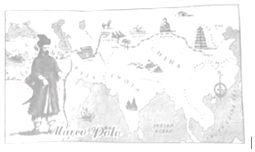
Living places
The home of the elephant is in the deep forest. It is the largest of all land animals, and is found both in Asia and Africa. One of the main places in Asia where the elephant lives is the island of Ceylon. The huge forests on the island become the home of thousands of elephants. The trees grow thick and tall. They make many parts almost dark, while bright sunlight is above and around them.
Living habits
The elephant likes the deep part and the coolest places of the forest. There he will stand swinging his ears, to drive away the flies; or he will pull down a branch (树枝) from a tree to fan himself. He likes bathing, and to be near a lake or running water. There he takes in the water with his trunk, and spreads it all over his body.
Food
The elephant enjoys the fruits in the forest, and also the leaves of the trees. There is plenty of food for him in the forests, though he is not always happy with what he finds there.
Way of movement
When a group of elephants moves about in the forest, the oldest goes first. The young elephants and their mothers are in the middle, where they are safest. Then all move along with a great noise, the branches of the trees bending and breaking before them. Though the elephant is usually harmless, no one dares to attack (袭击) a group of them moving through the forest.
How people treat them
In Asia the elephant is trained to work. At one time the African elephant also was trained. Soldiers in ancient times often went to fight on the backs of African elephants. But now the elephant that lives in Africa is illegally (非法地) hunted mainly for its valuable ivory. In order to protect them, governments around the world have developed laws to stop this.
(1)The elephant likes the part of the forest.
A.bright and sunny
B. deep and cool
C. dry and deep
D. wet and sunny
(2)Elephants like to do the following things except .
A.bathing
B. having fruits
C. eating leaves
D. harming people
(3)Why are young elephants and their mothers in the middle while moving ?
A.To keep safe.
B. To avoid making noises.
C. To break the trees.
D. To walk faster.
(4)What is the African elephant now mainly hunted for ?
A.Working for people.
B. Fighting in the army.
C. Performing for people.
D. Selling for money.
(5)Which of the following sentences is NOT true according to the passage ?
A.Many Asian elephants live on the island of Ceylon.
B.Elephants drive away the flies by using their ears.
C.Elephants are always happy with the food they find in the forest.
D.A group of moving elephants make people scared, although they are harmless.
A
Maps are pictures of places. You must have seen a map of the world, of your home country, and even of your home city. They show us towns, cities, roads, parks, schools, hospitals, and more.
There are also many other types(类型)of maps. Each gives a special kind of information. There are street maps, tourist maps, and even maps of the air and sea.
Here is a simple road map.
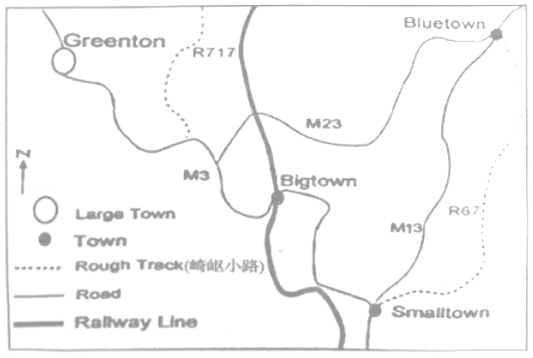
(1)Which is the biggest town on the map?
A. Greenton.
B. Bluetown.
C.Smalltown.
D. Bigtown.
(2)If you drive from Smalltown to Bluetown, which is the best way to choose?
A.M3
B.M13.
C.M23.
D.R67.
(3)What does the writer mainly want to tell us?
A.Ways to choose maps.
B.Ways to read maps.
C. Some types of maps.
D. The importance of maps.
阅读短文,根据题目要求完成各小题.
In early spring,the changing temperature usually makes a number of Chinese people uncomfortable. Cold air, bringing rain or even snow, easily tears up (破坏) the warmth of the spring within a night(一夜之间).
However, with the coming of Guyu ﹣ the Grain (谷物) Rain, the blue sky and gentle winds would finally stay. Falling usually on or around April 20 every year, Guyu is the sixth of the 24 solar terms (节气). It means the beginning of a lively summer and people get busy from now on.
Sow (播种)grains
This is an important period of the growth of grains. The ancient Chinese already knew that as Guyu comes, the weather will become warm enough for sowing. The farmers usually catch the chance to plant rice, corn and beans.
Hope for safety and harvest
For those living near the sea, they will hold some ceremonies(仪式)on Guyu, hoping for safety as well as harvest during the coming fishing season.
Watch the peony
It's also a great time to see the peony (牡丹), which is known as "the Queen of All Flowers" in Chinese culture. (3)As a result.watching peonies becomes one of the most enjoyable activities for many. The flower is said to be the favourite of Empress (女皇) Wu Zetian of the Tang Dynasty, who was the only woman ruler in Chinese history.
Pick tea leaves
Tea leaves picked before Guyu are among the best tea leaves. People believe that the tea leaves picked on the day of Guyu can make eyes clear and drive away bad luck. So the habit of drinking tea at this time of year has become a tradition in some places of China.
(1)When does Guyu usually come every year?
(2)Why is Guyu an important time for sowing grains?
(3)Translate the underlined sentence into Chinese.
(4)List (列举) activities on Guyu according to the passage (at least two).
(5)Give a proper title to the passage.
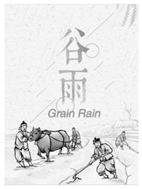
In ancient Egypt, women did not go out to work. They stayed and worked at home. Many Egyptian men were farmers. Some men were builders or fishermen. Other men worked as artists. Some other important people did not do any farming.
The weather in Egypt was very hot. Ancient Egyptians did not wear many clothes, Men, women and children often wore simple robes made of thin cloth. On their feet they wore light open shoes. People, including women, shaved(剃) hair from their heads to keep cool.
Children in ancient Egypt grew up to do the same jobs as their parents. Girls stayed at home with their mothers. They learned to look after the home.Boys worked with their fathers. They learned to do the jobs their fathers did. They learned to look after the home Boys worked with their fathers. They learned to do the jobs their fathers did. They only went to school to learn to write if they wanted to become a scribe (抄写员).
Many of the games played by ancient Egyptians are similar to games we still play today. Children played racing and jumping games. They also played ball games and with wooden toys. Older children played a game like chess.
The kings of Egypt (the pharaohs) had enough power to master their country. The people thought that the pharaoh was a god. He owned everything. Everyone had to do what he told them to do. The pharaohs built huge tombs. When a pharaoh died, he was buried in the tomb. The tombs were often in the shape of pyramids. When a pharaoh was buried. he was surrounded by treasure and by things to help him in the next world, such as food, clothes, furniture and weapons.
Title |
Life in (1) Egypt |
|
Paragraph headings |
Work |
Women didn't go out to work, and most of the men worked as farmers,(2) builders or fishermen. |
Clothes |
•They wore robes made of thin cloth and(3) open shoes. •To keep(4) ,people had their hair cut with shaven heads. |
|
Children |
•Girls stayed at home and(5) with their mothers while boy followed in their fathers' footsteps. •Some had to(6) to write at school to become a scribe. |
|
(7)
|
•Children played almost the(8) games as we do today. •Most of the toys they played with were made of(9) . |
|
Pharaohs |
The kings were very(10) and rich in life. They were buried in huge tombs together with treasure and necessities. |
|
Culture UK: Bristol
Chocolate!
The first chocolate bar in the world was created in Fry's, a company in Bristol. Joseph Fry invented the delicious treat around the year 1720. Fry's also produced the first chocolate Easter egg in the UK in 1873. The company continues to produce chocolates and sweets to this day.
Balloon Festival
The Bristol Belle was the first modern hot﹣air balloon in Western Europe and was developed and built in 1967. The Bristol International Balloon Festival is held every summer in the city, and is Europe's biggest hot﹣air balloon event.
(3)
According to a new study, Bristol is the UK's most musical place, with the biggest number of musicians among the population. It's well﹣known for giving birth to the trip﹣hop scene in the 1990s. Its multicultural(多元文化的)population has really influenced the sounds of the Bristol music scene.
Famous people
JK Rowling
J.K. Rowling was born and brought up in Chipping Sodbury, just outside Bristol. It is said that she invented her famous character Harry Potter after meeting a young boy named Ian Potter in the village where she grew up.
Banksy
Banksy is a graffiti artist local to Bristol. He is famous all over the world for his street art. Some of his pieces have been sold for hundreds of thousands of pounds. Many Hollywood pop stars and famous people love to collect his work.
(1)What does Fry's produce?
(2)What can people see every summer in the sky of Bristol?
(3)Please give a title in English for Paragraph 3. (In no more than FIVE words.)
(4)Is Ian Potter an invented character or a real person?
(5)What is Banksy well﹣known for?
Do you know five of the smallest countries of the world are in Europe? They're commonly known as the microstates.
Andorra
It's in the Mount Pyrenees,which separates France and Spain.It is about 470 square kilometers and has a population of about 70, 000.While Andorrans make up only about one﹣third of the population,almost half are Spanish and the rest are Portuguese and French.The official language is Catalan.
Liechtenstein
It is a principality.Its area of 160 square kilometers is home to 33,000 people who speak mostly German.There is great skiing here.
San Marino
As one of the world's oldest republics,it covers an area of 61 square kilometers.It has a population of about 28,000 and they speak Italian there.Tourism is the main industry,but banking,clothing,wine,and cheese are also important to the country.
Monaco
It is located(位于)on the Mediterranean Sea along the coast of France,not far from the Italian border.It has a population of 32,000 and is only 2 square kilometers!It is the world's most densely(密集的)populated country!Many wealthy people choose to live here.Most of them are French or Italian.
Vatican City
Known as Roman Catholic Church,Vatican City is the world's smallest country,measuring only 0. 44 square kilometers.Surprisingly,it is located in Rome,the capital city of Italy.Although it is home to only 890 citizens,3,000 people from Rome work here every day.Millions of tourists visit each year to see its buildings and famous artwork.
(1)How many Spanish are in Andorra?
A.About 70,000.
B.About 23,000.
C.About 35,000.
D.About 12,000.
(2)Which country does the number ②in the picture refer(指)to?
A.Andorra.
B.Liechtenstein.
C.San Marino.
D.Monaco.
(3)Which of the following is true according to the passage?
A.Skiing is very popular in Liechtenstein.
B.Banking is the main industry of San Marino.
C.Liechtenstein has fewer people than San Marino.
D.Vatican City,the capital city of Italy, is in Rome.
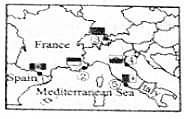
"Where is the university?"This is a question that many visitors to Cambridge ask.But no one can give them an exact answer,for there is no wall to be found around the university.The university is the city.You can find classroom buildings,libraries,museums and offices of the university all over the city.And most of its members are the students and teachers of the thirty﹣one colleges.
Cambridge was already a town long before the first students and teachers arrived 800 years ago.It grew up by the river Cranta,and the river was once called the Cam.A bridge was built over the river as early as 875.So the town got its name"Cambridge".
In the fourteenth and fifteenth centuries more and more land was for college buildings.The town grew much faster in the nineteenth century after the opening of the railway in 1845Cambridge became a city in 1951 and now it has a population of over 100,000.
Many young students in other countries expect to study at Cambridge.A large number of people
from all over the world come to visit the university.It has become a famous place all around
the world.
请根据短文内容,选择最佳选项.
(1)Visitors to Cambridge can find the following in the university except .
A.libraries
B.walls
C.offices
D.museums
(2)According to the passage,Cambridge University is made up of colleges.
A.31
B.15
C.875
D.800
(3)The town got its name from .
A.the first students and teachers
B.the bridge built over the river Cam
C.the members of the university
D.the person who designed the bridge
(4)Which is the correct order of the events about Cambridge?
a.The railway was opened.
b.Cambridge became a city.
c.More and more land was for college buildings.
d.The first students and teachers arrived at the town.
A.a→c→b→d
B.d→a→c→b
C.b→c→a→d
D.d→c→v→a→b
(5)From the passage,we know that .
A.the town grew much faster before 1845
B.the city had a population of 100,000 in 1951
C.many young students dream of studying at Cambridge University
D.the Cambridge University has a history of more than 1,000 years.
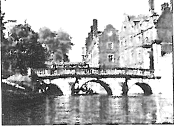
Just 28 years ago,Berlin was a city divided into two by the Berlin Wall.How excited people were as the Berlin Wall came down.Since then,Berlin has become one of the coolest cities in Europe.Here are the main reasons why I think Berlin is cool.
First,Berlin has cheap hotels and everyday objects (物品).You needn't worry about spending too much money when visiting Berlin.
Second,Berlin knows how to give parties,and there is a festival here every month of the year.Perhaps the most famous is the Berlin International Film Festival (the BIFF).
Third,Berlin has beautiful buildings of its own.The Brandenburg Gate is one of the city's most famous buildings.It's the symbol (象征) of more than 200 years of history.The TV Tower is as good as the
Eiffel Tower in Paris and the London Eye.
Lastly,Berlin is a city of living art.Artists can create works of art on the sides of buildings.
If you want to visit a European city with culture,cheap objects and lots of colours,Berlin is the place to be.What are you waiting for?Get to Europe's coolest city before anyone else discovers it
26.The Berlin Wall came down in .
A.1969.
B.1979
C.1989
D.1999.
27.The writer does NOT tell us that in Berlin.
A.everyday objects are cheap
B.how often a festival is held
C.people know how to give parties
D.in which month the BIFF is held
28.According to the 4th paragraph(段落 ), great buildings of Berlin are mentioned.
A.two
B.three.
C.four
D.five
29.The writer suggests that we .
A.create works of art
B.choose Berlin as the city to visit
C.build some towers like the Eiffel Tower
D.discover a cooler city than Berlin to visit
30.Which is the best title (题目) for the passage?
A.Berlin's festivals
B.Berlin﹣﹣﹣a really cool city
C.Berlin's beautiful buildings
D.Berlin﹣﹣﹣a city of living art.
In Australia there is a famous island called Fraser Island.A great many visitors come here for holidays every year.Why?The reason is that it is special.(56) .In fact,it is the largest sand island in the world.It's about 200 kilometers long and 240 kilometers wide.
Though the island is a popular place of interest,there is no airport on the island.The long beach along the east coast works as the airport.(57) .
On the island there are sand hills without any plants,but there are forests with old trees,beautiful flowers and over a hundred lakes,too.(58) .
Every year,visitors come to enjoy the island's natural beauty.People like camping and hiking there.(59) .Animals were killed for food and this made them in danger of extinction (灭绝).They threw rubbish everywhere,and the lakes were seriously polluted.
(60) .Rules have been set up.For example,visitors are not allowed to use motorboats (摩托艇) or go fishing in the lakes,and they mustn't leave any rubbish.
A.Planes arrive and leave from here
B.Anyone who breaks the rules w il be pun i shed
C.The island is completely made of sand
D.Unluckily,visitors have caused many problems
E.Many kinds of birds and animals live in the forest
F.So it is time to protect the environment of the island.
Many countries all over the world have National Parks.There are about 7,000 National Parks around the world.Most of them protect natural settings as well as the plants and animals that live there,but a few are in towns and cities.
Are there National Parks in England?
There are nine National Parks in England.The first three were the Peak District,the Lake District and Dartmoor,which were all named as National Parks in 1951.Others followed afterwards,such as the North York Moors in 1952,the New Forest in 2005 and the South Downs in 2010.
Are National Parks in England the same as those in other countries?
Many National Parks around the world cover huge areas of land where nobody lives,but in England most of the countryside within them is useful for farming and other activities.As a result,National Parks in England include places where people live and work,as well as wild and beautiful areas where there is little sign or human life.
Why do visitors go to the National Parks?
There are plenty of activities to do in all of the National Parks in England.Visitors can walk or cycle,following marked route,and many of the parks organize activities for families.
Are there any problems in the National Parks?
There are about 110 million visitors to the parks every year,bringing many benefits to the areas but creating problems too.Many popular towns and villages can be swamped (充斥) by visitors.This results in overcrowded car parks and roads choked (堵塞) with traffic.Life can be difficult for people who live there,as more and more gift shops and cafes are opened instead of those everyday shops; in popular areas,house prices can become too high for local people making it hard for them to stay in the area.
Another major problem is litter.In the parks it is a particular (特别的) danger to animals.Broken glass can also cause fires by focusing the rays of the sun.When these start in wild places,they are much harder to control and can damage (毁坏) large areas very quickly.
How can people help?
All National Parks in England promote (倡导) the Countryside Code,which tells people how to take care of their environment.If these rules are followed,the National Parks will be protected and continue to give pleasure to many people for a long time.
National Parks in England |
|
(56) Purpose |
◆Most National Parks around the world are to protect nature. |
Development |
◆Nine parks were named as National Parks in England in different(57) . |
(58) |
◆Many National Parks around the world are huge in area but(59) any people. ◆Most of the countryside in National Parks in England is used for farming and other activities. |
Reasons |
◆Visitors can walk or cycle,following marked routes,and families are(60) with organized activities. |
Problems |
◆Too many visitors can cause heavy(61) . ◆The disappearance of everyday shops makes(62) difficult. ◆Local people can hardly(63) to buy houses in popular areas. ◆Litter is(64) to animals.Fires caused by broken glass can damage large areas very quickly. |
Way out |
◆People should(65) the rules of the Countryside Code. |